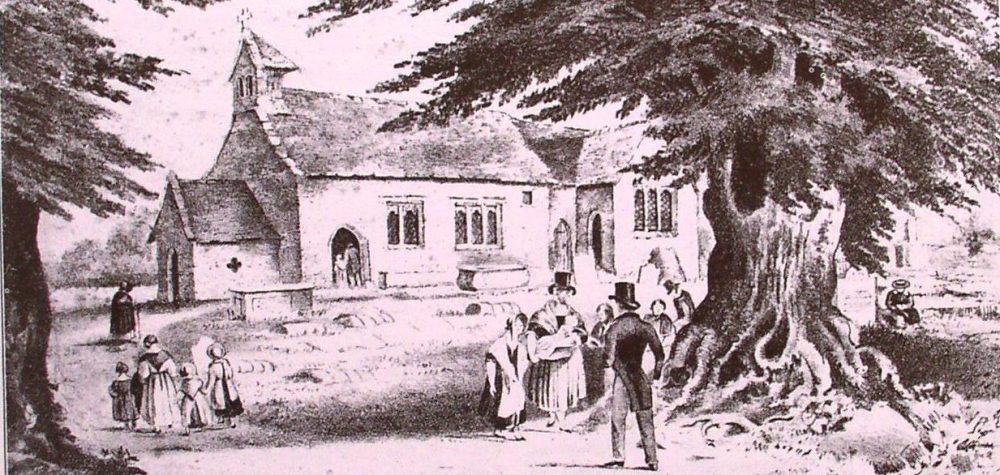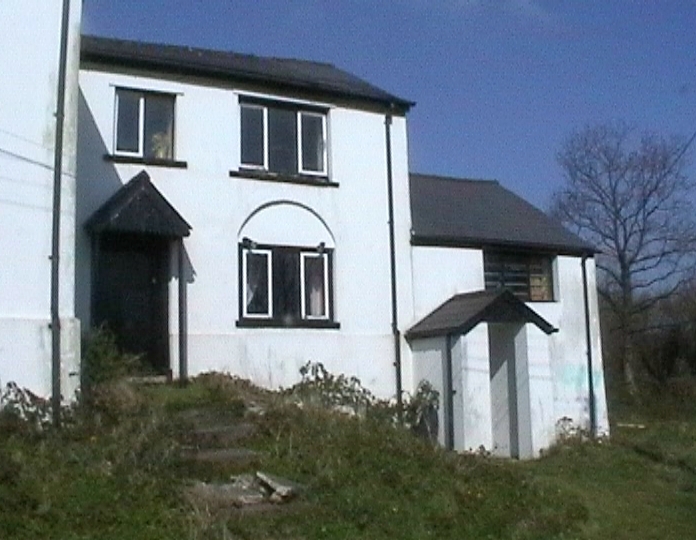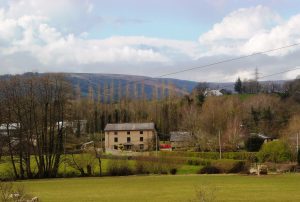 Ynys-y-Bwlch – now in the parish of Llanover
Ynys-y-Bwlch – now in the parish of Llanover
The first recorded mention of Ynys y Bwlch is a lease dated 1590 in which Lewis Watkin, husbandsman, and his wife Margaret, rent nine kevers of land from the Right Honourable Edward Neville, Lord Bergavenny.
Another Lewis Watkin, who died in 1624, was holding the lease. In his will of 1624 he passes the lease to his son William containing a messuage, barn, and several parcels of land being part of Gwern y buelly in the parish of Goytre and the Lordship of Bergavenny.
In 1673 Walter Harry holds one parcel of land called Tyre y Beallt, lately Thomas James and before that William Lewis ap Powell and formerly William ap Jenkin and Llewellin Goughe Vachan, and pays 3d per year.
In the will of Joan Richard in 1703 she gives £1 to Ann the wife of William Watkin and her son Richard.
In 1751 Richard Watkin is constable for his lease; his wife Catherine was buried in St Peter’s churchyard on the 3rd March 1752.
 In 1754 Richard Watkin married Susanna Philips at Goytrey Church, he died in June 1762 followed then by his wife Susan in April 1763.
In 1754 Richard Watkin married Susanna Philips at Goytrey Church, he died in June 1762 followed then by his wife Susan in April 1763.
The lease is then taken by William Jones in 1772 for the lives of Catherine his wife aged 44, daughter Mary 3. A William Jones was the constable in 1809.
The lease in 1809 is held by John Phillips 47, for the lives of his nephew John Phillips aged 16 months and James Lloyd aged 3. John Phillips holds the lease for many years and in 1827 he is paying 5s land tax for Wern-y-buallt.
In 1831 William Phillips is mentioned at the property but on the 1841 census Philip Rees of Tyr Ewen is the tenant he holds the lease until 1852, and is farming 15a 2r 25p at Ynys-y-bwlch.
Another lease dated 10th June 1851 is granted to Philip Rees for the same amount of land.
On the tithe update of 1889 Josiah Lewis of Dan-y-graig holds the lease but no occupier is named.
By the 1901 census Thomas Lewis 30, a farmer, and Elizabeth his wife aged 24 are at Gwen–y-Buallt.
In 1910 the owners are Hodges and Cunliffe Solicitors of Abergavenny, the gross value is £7 10s and the rateable value is £6 10s.
Thomas Lewis is still at Ynys-y-bult on the 1911 census it has 4 rooms, Thomas is 42, a farmer born in Llanover, Elizabeth his wife is 32, and their children are Thomas 11, Maud 10, Ivor 7, Brenda 5, and Arthur who is 2. All the older children are attending school.
The 1914 poor rate mentions Thomas Lewis still at the property.
In 1920 the property was sold to Llanover Estate and on the 1944 land tax Herbert is the owner and T Lewis the tenant.

 There is a lease in 1492 dated October 4th from The Duke of Bedford, Earl Pembroke and Lord Bergavenny to his kinsman Richard ap Llewelyn Morgan for two mills with their suit of tenants lying within the fees of Llannonour and Pellenne called Orogon is Mill and Goytrey is Mill.
There is a lease in 1492 dated October 4th from The Duke of Bedford, Earl Pembroke and Lord Bergavenny to his kinsman Richard ap Llewelyn Morgan for two mills with their suit of tenants lying within the fees of Llannonour and Pellenne called Orogon is Mill and Goytrey is Mill. Royal Oak – 977 on the
Royal Oak – 977 on the  Cefn Mynog – 570 on the
Cefn Mynog – 570 on the  1901 census says John Williams 53, a cowman on a farm, Isabella is 53, the owner is the Earl of Abergavenny, gross value is £8 and the rateable value is £7 15s.
1901 census says John Williams 53, a cowman on a farm, Isabella is 53, the owner is the Earl of Abergavenny, gross value is £8 and the rateable value is £7 15s. Coed Robin – 107 on the
Coed Robin – 107 on the  In 1812 Vaughan Jones was paying the land tax and continued to do so until after 1831. The 1841 tithe says Vaughan is the owner and Thomas his son is the occupier. On the census Thomas is 40, Elizabeth his wife is 45 and son Thomas is 7.
In 1812 Vaughan Jones was paying the land tax and continued to do so until after 1831. The 1841 tithe says Vaughan is the owner and Thomas his son is the occupier. On the census Thomas is 40, Elizabeth his wife is 45 and son Thomas is 7. The sale of the chief rent on the Cae Robin Farm of 1s 9d was sold to the trustees of Llanover Estate on the 30th November 1913.
The sale of the chief rent on the Cae Robin Farm of 1s 9d was sold to the trustees of Llanover Estate on the 30th November 1913.
 There have been many various spellings of Glan Usk. Although it is now in the parish of Llanvair, it was once in the parish of Goytrey.
There have been many various spellings of Glan Usk. Although it is now in the parish of Llanvair, it was once in the parish of Goytrey.